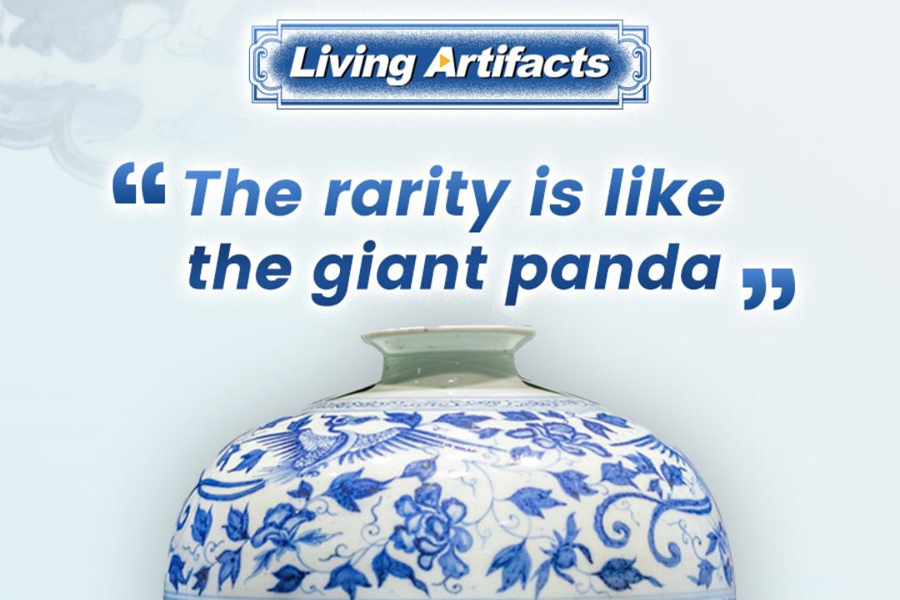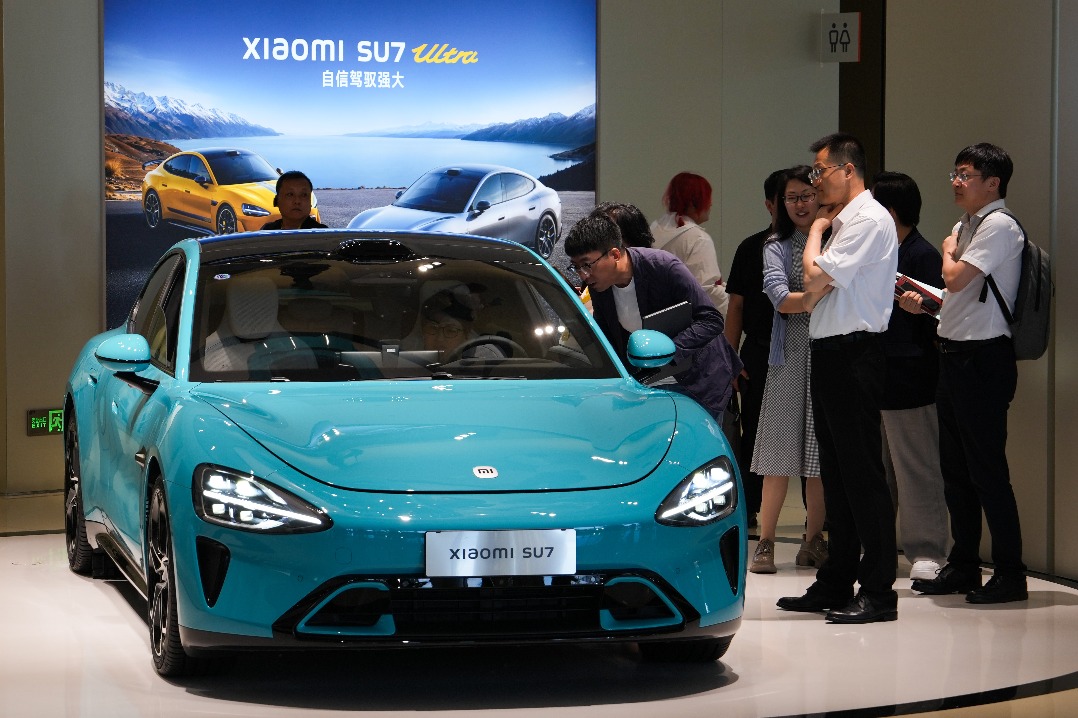Improving fortunes
Guangzhou triennial highlights rapid pace of progress and how people adjust to it, Deng Zhangyu reports.

Long lines of visitors queuing outside the Guangdong Museum of Art in Guangzhou, Guangdong province, are not an unusual sight since the Guangzhou Triennial, held at the museum, opened to the public in January. Crowds of young people are flowing into the museum to view the changes of China's contemporary art in the past decades.
The seventh Guangzhou Triennial features 59 works by artists from across the globe, including the United States, the United Kingdom, New Zealand, Portugal, Japan and South Korea. It covers large-scale installations, videos, photos, sculptures, paintings and multimedia works.
Titled Symphony of All the Changes, the triennial puts the word "change" into its four sections curated from various perspectives: Bumps on the Edges, In Praise of Slow Art, Touch Screen and Immanence.
Wang Shaoqiang, director of the Guangdong Museum of Art and curator of the show, says that change and uncertainty have become a reality that faces everyone after an unexpected public health crisis shattered people's expectations of continued development resulting from globalization.
"Change is normal. However, the speed and strength of change reaches a level we never met before. We want to explore how to deal with such change via art. The first thing is to look back into our past," says Wang.
Thus, the Guangzhou triennial puts the city of Guangzhou in the context of China's opening-up and reform in the past four decades, during which the port city in southern China has been at the forefront and blazed the trail to embrace the world.
"Contemporary artists in Guangzhou are very sensitive to new things introduced from the West. Compared to their peers in Beijing and Shanghai, they focus more on their daily life and people living around them," says Wang.
Wang's description can be strongly felt in the section, Bumps on the Edges, which presents iconic local elements, such as factories, factory workers and commodities, and features lots of local artists.
The installation, Dreamy Lisa Salon, named after the fourth album of folk music band Wutiaoren, has become the triennial's star work. Groups of young visitors, mostly in their early 20s, come to the museum to take photos at the salon and share them on their social networks.
Starring guitarist Maotao and accordionist Renke, Wutiaoren from Guangdong province is one of the country's most popular folk-rock bands.
Their casual dress code with slippers and lyrics focusing on daily life won them tens of thousands of fans. The humidity in the air, narrow lanes, small restaurants and hair salons all inspire the band's songwriting.
The band works closely with a wide range of visual artists to produce music videos, posters and design works. Their signature logo is a red plastic bag with their name on it, a powerful symbol floating between popular culture and contemporary art. All these elements can be found in their installation, Dreamy Lisa Salon, inspired by a hair salon that was popular in Guangzhou in the 1990s.
Just like Wutiaoren, poet Xi Chuan and film director Jia Zhangke are also included in the contemporary show. All their art forms are seen as a crossover from popular culture to contemporary art.
Wu Hongliang, curator of the section, Bumps on the Edges, explains that after China's opening-up and reform in 1978, people's cultural demands started from their embracing pop music, films and poetry, and contemporary art is part of this.
From the established director Jia's video Platform, which tells of the dramatic changes and reforms that happened between 1979 and 1989, to the well-known poet Xi's poem Sense of Reality or excerpts from his recently released work Take This, and to folk band Wutiaoren, the show aims to "close the distance between art and daily life", according to Wang, the director.
"Although they're not regarded as contemporary artists, we can't say that their works are not art. Art is diversified and can be close to everyone," Wang explains.
These star "artists" help to attract young people to pour into the museum, leading to those long lines at weekends. Many visitors say they saw photos of the works by these celebrities on online social platforms and decided to visit the museum.
Zhang Kaixing, a 21-year-old who works at a factory, says that after he saw a photo of Wutiaoren's Dreamy Lisa Salon, he made his first visit to the art museum.
"I never knew what contemporary art was before. It offers me an interesting experience of art," says the young man, who has queued about 20 minutes to enter the museum with his friends, all of whom are first-time visitors to an art museum.
Apart from those celebrities' works, Zhang is also intrigued by artists who combine local elements into their art pieces.
For instance, Cao Fei's video Cosplayers concentrates on a group of young people dressed up as anime or game characters, roaming around streets in Guangzhou, chasing or even fighting with each other. Xu Bing's The Seven-Character Poetry Collection of Small Enterprises collects tens of thousands of clothing brand labels produced in Guangzhou and uses a computer program to create a seven-character poem.
Guangzhou is a port city and has lots of factories to produce daily goods sold across the world, which results in artists' reflection of the local culture, says curator Wang.
The Guangzhou Triennial was established in 2002 and is one of the earliest of its kind in China. Its more than 20 years' history has cultivated an audience who can appreciate contemporary art. From 2008, the triennial started to hold activities on educating the public on how to enjoy and understand a contemporary show.
"Despite local people's high acceptance to new things and ideas, our continuous public education on contemporary art contributes a lot to the popularity of the triennial," Wang says.
Besides exploration of local culture, the triennial also discusses and reflects issues facing the whole world.
In the section, In Praise of Slow Art, curated by Philip Dodd from Britain, artists use traditional materials, such as textiles, ceramics and paper, to focus on the power of human bodies and the art of handicrafts, a kind of "slow art" to echo the fast times empowered by high technology.
The section, Touch Screen, explores people's relationship with the real world when digital technologies blur the boundary between virtual and real.
"The last triennial three years ago focused on the future by highlighting science and technology. This year, we look back to our past, to all the changes happened in and outside China," says Wang.
"Looking back is to find answers from history and be better prepared for the future when the whole world is under a context of great changes."
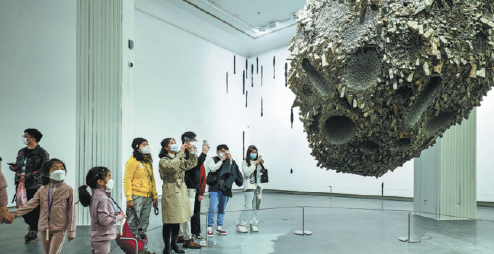
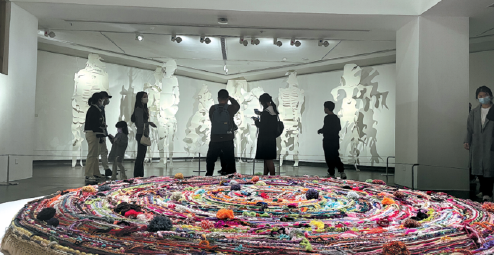
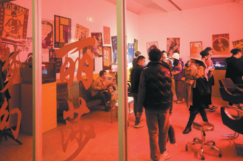

Today's Top News
- China reaffirms sovereignty over Taiwan, says complete reunification unstoppable
- A-share market surges past 100 trillion yuan milestone
- No reason for Germany to let political expediency hurt relations with China
- Book on Xi's views on strengthening, revitalizing armed forces published
- China supports Ukraine peace talks between all parties
- China to hold press conference on military parade preparations


















